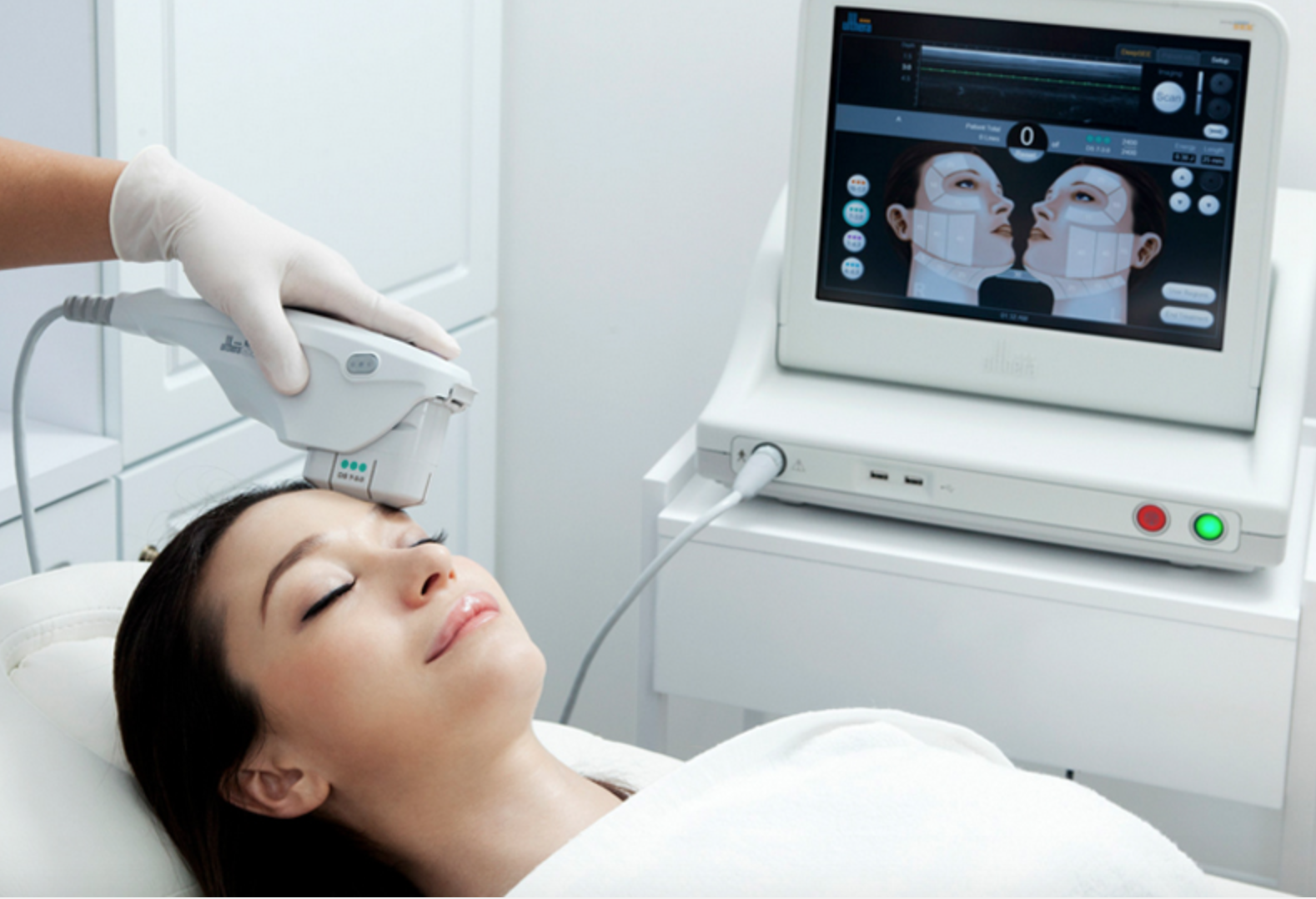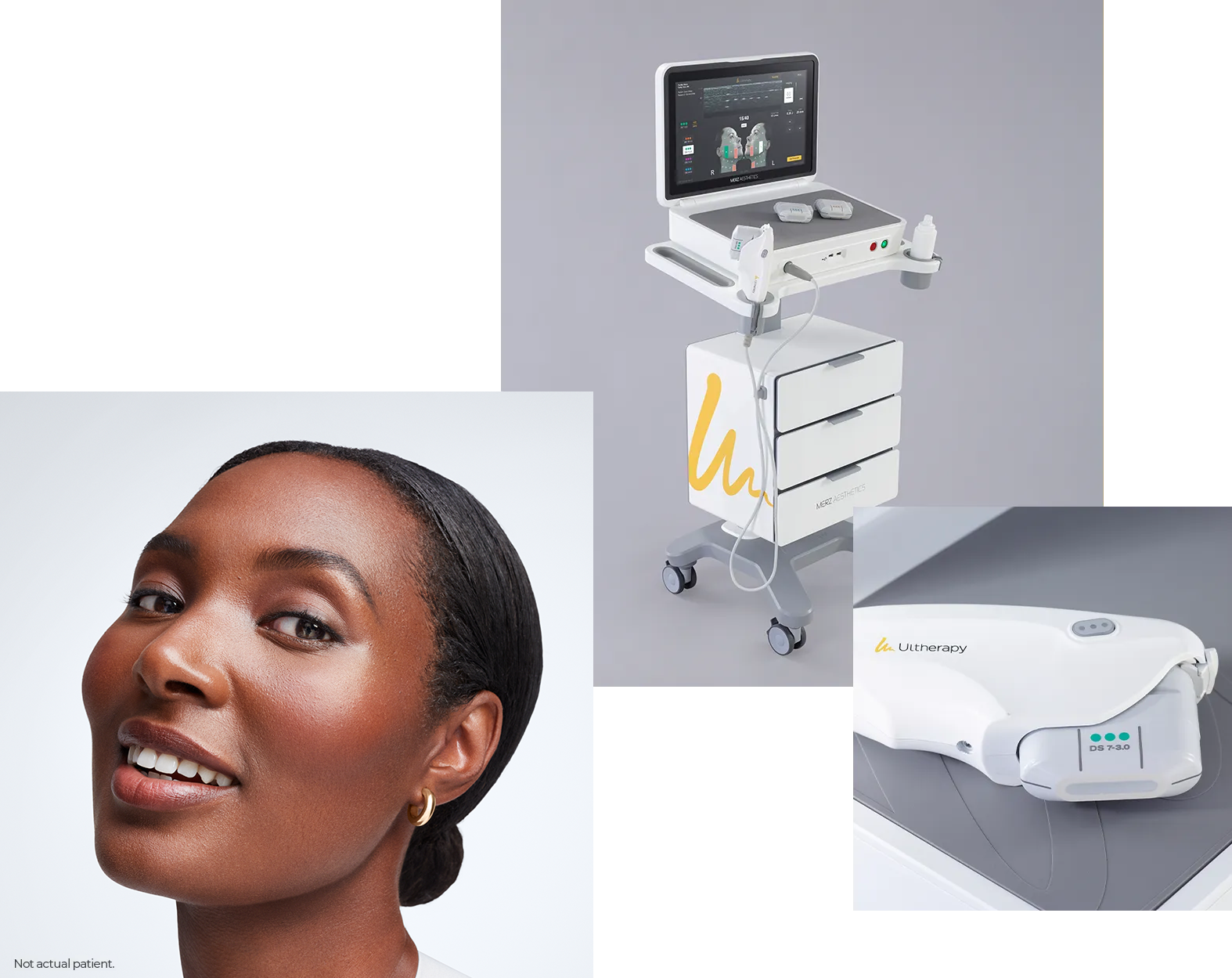Density RF Malaysia vs Ultherapy Malaysia: Comparison Guide
Why Ultherapy Might Be Clinically Required: Exploring the Factors for a Non Surgical Lift
Ultherapy is getting attention as a sensible choice for individuals encountering skin laxity because of aging or certain medical conditions. This non-surgical therapy promotes collagen manufacturing, using a service that stays clear of the healing time connected with intrusive procedures. As individuals seek to enhance not only their look however also their general skin health, comprehending the situations that necessitate Ultherapy's usage ends up being essential. What aspects contribute to its clinical necessity?
Comprehending Ultherapy: What It Is and Just how It Works
Ultherapy, a non-invasive cosmetic treatment, utilizes ultrasound technology to stimulate collagen manufacturing and promote skin tightening up. By supplying focused ultrasound power deep right into the skin, it targets the foundational layers normally addressed in medical renovations. This process motivates the body's all-natural recovery reaction, causing gradual lifting and tightening up of the skin with time.

Treatment sessions commonly last between 30 to 90 mins, depending upon the dimension of the area being dealt with. While results might not be right away noticeable, suitable effects normally show up within 2 to 3 months as collagen continues to establish. Ultherapy deals a compelling non-surgical alternative for individuals looking for skin rejuvenation without the demand for invasive procedures.
The Aging Refine: Effects on Skin Elasticity and Collagen
Aging certainly brings changes that decrease skin flexibility and collagen production, bring about visible indications of drooping and creases. As individuals age, the skin's ability to maintain dampness decreases, leading to a drier and much less resistant surface. Collagen, a crucial healthy protein liable for skin framework, also reduces, creating the skin to shed its firmness and youthful appearance. Elements such as sunlight direct exposure, ecological pollutants, and lifestyle options additionally increase this decrease in skin top quality.
This loss of elasticity and collagen creates a cascade of modifications, consisting of the development of jowls, growing nasolabial folds up, and a total sagging look. The skin's support group weakens, making it more vulnerable to the impacts of gravity. Several people look for interventions like Ultherapy to fight these aging effects, aiming to restore a more vibrant, tight look without the requirement for invasive medical treatments.
Clinical Conditions That May Take Advantage Of Ultherapy
Ultherapy is progressively recognized for its prospective benefits in resolving different clinical conditions. People experiencing skin laxity, those in post-surgical healing, and patients with persistent skin problem may discover this non-invasive treatment helpful. By stimulating collagen manufacturing, Ultherapy can enhance skin suppleness and improve general look for these groups.
Skin Laxity Problems
Skin laxity can be a considerable problem for individuals experiencing numerous medical problems that affect the stability and flexibility of their skin. Conditions such as Ehlers-Danlos disorder, which disrupts collagen production, can lead to premature skin aging and drooping. Additionally, individuals with autoimmune problems may experience skin modifications that add to laxity. Hormonal changes, specifically during menopause, additionally contribute in lessening skin firmness. Ultherapy, using ultrasound modern technology, targets the much deeper layers of skin, stimulating collagen manufacturing and tightening up the affected areas. This non-invasive treatment might offer a practical option for those looking for to address skin laxity resulting from these clinical problems, boosting both appearance and self-esteem without the requirement for medical treatment.
Post-Surgical Recovery Aid
Post-surgical healing can commonly existing obstacles, particularly for individuals experiencing skin laxity due to surgical interventions. Ultherapy acts as a prospective help in this scenario, making use of ultrasound technology to stimulate collagen production and improve skin tightness without invasive procedures. Patients who have gone through surgical procedures such as renovations, liposuction surgery, or various other body contouring treatments might discover that Ultherapy boosts their healing by dealing with unequal texture and laxity that can occur post-operation. This non-surgical method can result in improved aesthetic end results, possibly minimizing the requirement for extra surgical interventions. It might assist reduce discomfort linked with the recovery process, offering individuals an extra all-encompassing recuperation experience. Ultherapy can be a useful choice in post-surgical care.
Persistent Skin Problem
For people suffering from persistent skin disease such as acne scars, rosacea, or laxity as a result of aging, non-invasive therapies may offer significant alleviation and improvement. Ultherapy has actually emerged as an appealing option, making use of ultrasound innovation to stimulate collagen manufacturing deep within the skin. This process can improve skin texture and flexibility, dealing with concerns like unequal complexion and drooping. Specifically, those with rosacea may experience lowered inflammation and swelling, while clients with acne scars can take advantage of boosted skin smoothness and total appearance. Notably, Ultherapy offers a non-surgical choice that decreases healing time and dangers related to invasive treatments, making it an enticing option for people looking for effective management of chronic skin problem.
Emotional Impact of Drooping Skin and Visual Concerns
The emotional toll of aging frequently shows up in the form of sagging skin, which can substantially affect an individual's self-worth and overall psychological wellness. Lots of individuals associate younger looks with power and beauty, bring about feelings of insufficiency when faced with visible indications of aging. This viewed decrease in charm can lead to social stress and anxiety, withdrawal from social communications, and a raised preoccupation with one's appearance.
Individuals may feel obliged to seek aesthetic therapies to combat these issues, as the desire to maintain a younger appearance can end up being intertwined with individuality. The psychological effects of sagging skin may likewise cause anxiety or a reduced top quality of life. Subsequently, non-surgical alternatives like Ultherapy become prospective options, aiming why not try these out not only to revitalize the skin however likewise to bring back confidence and a positive self-image, inevitably resolving the much deeper psychological ramifications of aging.
Comparing Ultherapy to Traditional Surgical Options
When contrasting Ultherapy to conventional go surgical alternatives, considerable differences arise in both cost-effectiveness and healing time. Ultherapy offers a non-invasive approach that usually leads to reduced costs and minimal downtime for people. On the other hand, medical lifts commonly need more monetary investment and an extended recuperation period.
Cost-Effectiveness of Ultherapy

Typical surgical lifts usually come with significant in advance prices and prolonged recuperation times, Ultherapy presents a compelling option that can supply comparable outcomes at a fraction of the cost. The ordinary cost of a surgical renovation can vary from $7,000 to $15,000, while Ultherapy treatments usually drop in between $2,000 and $4,500, depending on the area dealt with and supplier proficiency. Furthermore, the absence of extensive pre-operative assessments and post-operative care connected with Ultherapy better adds to its cost-effectiveness. This method not only lessens economic pressure however likewise enables patients to buy other elements of their wellness and health. In this means, Ultherapy emerges as a financially practical choice for those seeking facial renewal without the worries of traditional surgical treatment.
Healing Time Contrast
Healing time is a considerable aspect in the decision-making procedure for those taking into consideration cosmetic treatments. Ultherapy sticks out as a non-surgical alternative that normally calls for marginal downtime. The majority of people can go back to their everyday activities practically right away, experiencing only mild soreness or swelling that generally settles within a couple of hours. On the other hand, traditional surgical options, such as facelifts, typically demand a lengthy recovery period. Clients might encounter a number of weeks of swelling, bruising, and limited task, with some returning to regular regimens taking up to 3 months. This plain difference in recuperation time makes Ultherapy an attractive choice for people seeking effective outcomes without the comprehensive aftercare related to surgical treatment, permitting for a smoother adjustment back to day-to-day life.
The Long-Term Advantages of Non-Invasive Treatments for Skin Health And Wellness
As people increasingly seek choices to operations, the long-lasting advantages of non-invasive treatments for skin health end up being extra obvious. Therapies such as Ultherapy, chemical peels, and laser treatment deal substantial advantages without the need for considerable recovery times connected with surgery. RJ Clinic Ultherapy. With time, these non-invasive options can promote collagen manufacturing, leading to firmer skin and an extra youthful useful reference appearance
In addition, regular non-invasive therapies can boost skin texture, tone, and elasticity, boosting overall skin health and wellness. People typically experience less complications and negative effects, making these treatments more attractive.
Additionally, the collective effects of constant therapies can sustain and extend visual renovations, enabling people to maintain their desired look with very little downtime. By focusing on non-invasive approaches, people can attain long-term outcomes while prioritizing their health and wellness. Eventually, the long-lasting advantages of such approaches emphasize their expanding popularity in modern-day skincare.
Frequently Asked Inquiries

How Long Does an Ultherapy Session Usually Take?
An Ultherapy session normally lasts in between 30 to 90 mins, relying on the therapy location. Variables such as the individual's certain demands and the extent of the treatment can affect the overall duration.

Are There Any Kind Of Adverse Effects Connected With Ultherapy?
Ultherapy can bring about adverse effects such as short-term soreness, swelling, or tenderness in the cured area - Density RF Malaysia. While the majority of people experience minimal pain, it is essential to get in touch with an expert for personalized recommendations and potential responses
How Soon Can I See Results After Therapy?
Results from Ultherapy commonly begin to show up within a couple of months post-treatment. The complete effects may remain to develop over 6 months as collagen manufacturing boosts, bring about visible training and tightening of the skin.
Is Ultherapy Suitable for All Skin Types?
Ultherapy is usually suitable for different skin kinds, including lighter and darker tones. Nevertheless, specific skin problem and issues might influence its effectiveness, making examinations with a certified professional necessary for customized recommendations.
Exactly How Often Should Ultherapy Treatments Be Repeated?
Ultherapy treatments are usually suggested every 6 to one year, relying on specific skin problem and desired results. Regular assessments by a certified expert can aid determine the very best frequency for maintenance and effectiveness.